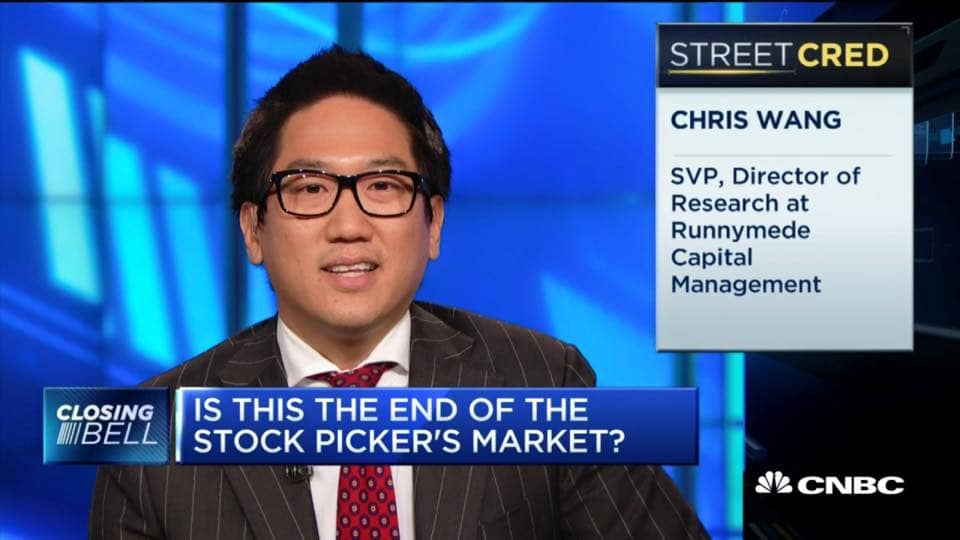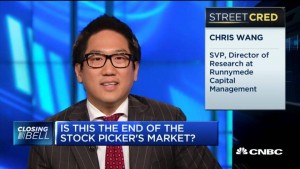Earlier this month, I was invited to make an appearance on CNBC's “The Closing Bell” to discuss the topic “Is this the end of a stock picker's market?” I enjoyed the lively debate with Ross Gerber and Evan Newmark. In case you missed it, click the video link below. Since one can only say so much in a 4-minute segment, I'd like to share some additional thoughts with our loyal Runnymede readers.
Many articles have been written about the shift from active to passive investing. The thesis is simple. The majority of active mutual fund managers underperform their index and also charge a higher fee. This is a double whammy for an investor's bottom line. Therefore, the solution seems simple: move your money into low-cost index funds and that should lead to higher returns over the long term. Unfortunately, it's not that easy. Let's take a look at the potential pitfalls of passive investing.
Can anyone be a truly passive investor?
The first issue with a passive strategy is that you have to decide what to initially invest in. From that first moment, you are already making a discretionary decision for your portfolio. Not only do you have to decide on which fund or ETF to invest in, but you also have to decide on asset allocation. What percentage do you want to be invested in stocks? In bonds? In commodities? This is a crucial decision because it will make a huge difference if you are invested 20%, 50% or 100% in stocks.
Try being passive in a bear market
Passive strategies tend to come into vogue during up markets. We are now in the 8th year of a rising market where it tends to make sense to hold low-cost, passive strategies. It is difficult for active managers to outperform when all ships are rising in tandem. However, the true test of passive investing is when markets aren't stable. In my 20 years in the business, I have never met anyone that can remain passive when the markets are crashing and headlines are grim. How will you react when your losses are at 20%, 30% or 50%? If you choose to sell at any point, you are no longer passive, but an active manager.
Finally, it is in times of trouble like 2001 or 2008 where active managers are able to do things that can make a huge difference for clients. By either shifting to defensive assets like US Treasuries or cash, assets can be protected and then redeployed at better prices. This is incredibly important to remember and a key tenant of success from the best investors. Warren Buffett is not a passive investor as he says, “Be fearful when others are greedy and greedy when others are fearful.” In 2008, he was able to invest billions near the market bottom and he will surely do it again in the next downturn. As of June 30th, Berkshire Hathaway was sitting on its biggest cash position ever with $72.7 billion. Legendary bond investor Jeffrey Gundlach follows the same philosophy. He says, “It's okay to wait for bargains, it's prudent, it's what investors need to do!”
Where do you stand on the active vs passive debate? How did you react in previous bear markets?







